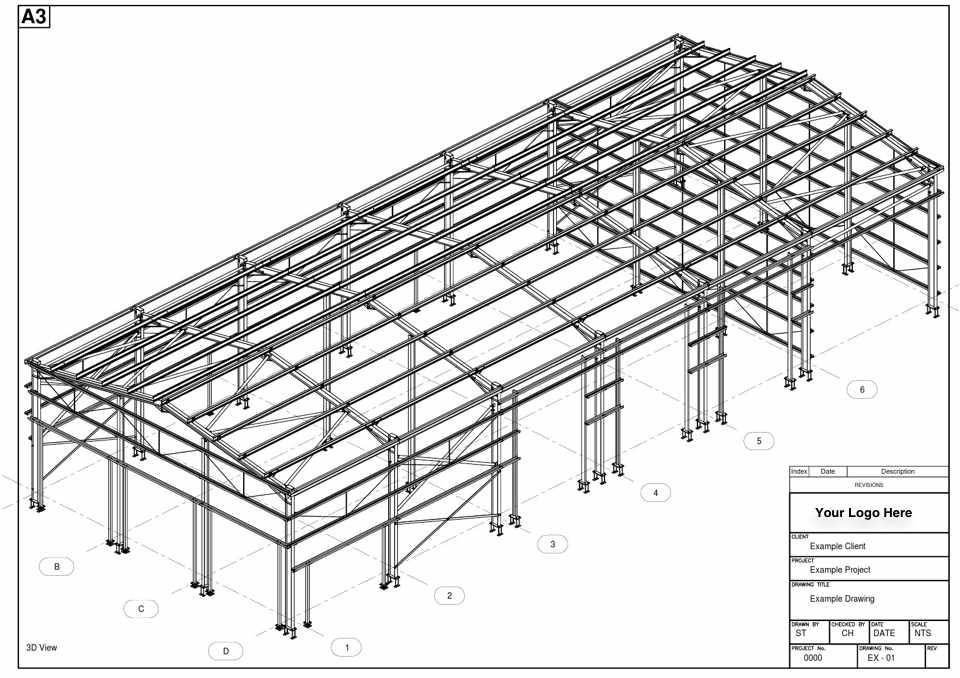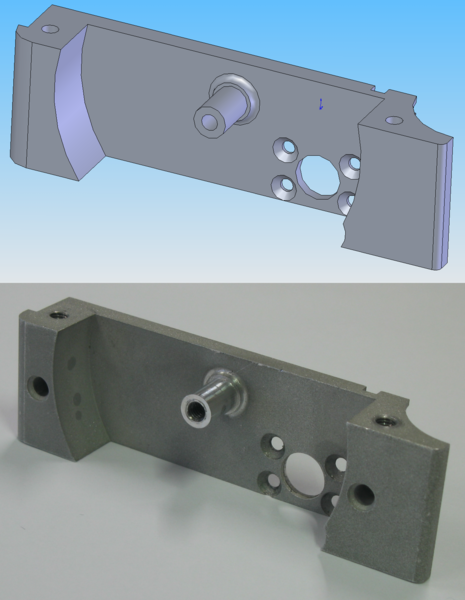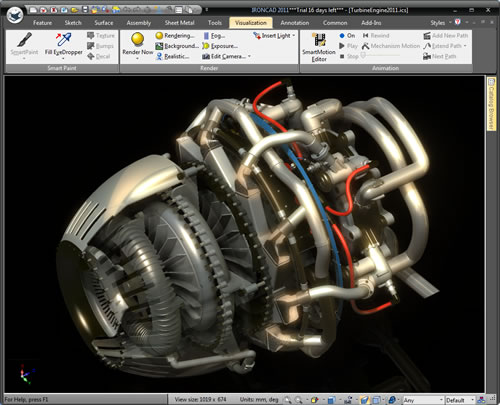Computer-Aided Design
Anotace
Modul je zaměřen na práci se zjednodušeným odborným technickým textem a na specifika odborného jazyka z hlediska lexikálního a gramatického.
Vstupní text modulu z oboru strojírenství je nazván „CAD – Basic Information“, „CAD - základní informace“ a prezentuje základní informace o počítačem podporovaném projektování. Doplňkový text „3D Printing“, „3D tisk“ se věnuje trojrozměrnému tisku. K pochopení textů žák využívá své znalosti získané v odborných předmětech a následně procvičuje a osvojuje si specifickou technicky zaměřenou slovní zásobu z uvedené oblasti. Z gramatických jevů je na základě textu procvičena tvorba trpného rodu v různých časech; lexikologie je zaměřena na slova opačného významu.
Texty a cvičení odpovídají úrovni B1 – B1+ Společného evropského referenčního rámce pro jazyky.
Výstupy:
Žák dokáže porozumět odbornému textu z oboru strojírenství, umí vyhledávat technické informace v odborném textu a zformulovat odpovědi na otázky k textu. Osvojuje si specifickou odbornou slovní zásobu a učí se ji používat pro účely ústní či písemné profesně zaměřené komunikace. Cílem je mimo jiné, aby se žák dokázal orientovat v odborných schématech s technickým popisem v cizím jazyce a aby tyto informace dokázal použít v praxi.
CAD – Basic Information
Computer-aided design (CAD) is the use of computer systems to assist in the creation, modification, analysis, or optimization of a design. CAD software is used to increase the productivity of the designer, improve the quality of design, improve communications through documentation, and to create a database for manufacturing. CAD output is often in the form of electronic files for print, machining, or other manufacturing operations. As in the manual drafting of technical and engineering drawings, the output of CAD must convey information, such as materials, processes, dimensions, and tolerances, according to application-specific conventions.
Designing in 2D is used for curves and figures in two-dimensional (2D) space; in 3D-designing, curves, surfaces and solids are designed in three-dimensional (3D) space.
According to the field of use, there are specialised CAD systems for machinery, building and architecture, electrical engineering, geographic systems and other areas. CAD is also widely used to produce computer animation for special effects in movies, advertising and technical manuals. (Cad architecture [online] Steel Detailing [vid. 8.9.2013].)

http://www.steeldetailinguk.co.uk/example-steel-detailing-drawings_files/Steel-detailing-example-4.jpg
Originally software for Computer-Aided Design systems was developed with computer languages such as Fortran and ALGOL but with the advancement of object-oriented programming methods this has radically changed .Today, CAD systems exist for all the major platforms (Windows, Linux, UNIX and Mac OS X); some packages even support multiple platforms. Right now, no special hardware is required for most CAD software. However, some CAD systems can do graphically and computationally intensive tasks, so a modern graphics card, high speed (and possibly multiple) CPUs and large amounts of RAM may be recommended.
The human-machine interface is generally via a computer mouse but can also be via a pen and digitizing graphics tablet. Manipulation of the view of the model on the screen is also sometimes done with the use of a Spacemouse/SpaceBall. Some systems also support stereoscopic glasses for viewing the 3D model. Technologies which in the past were limited to larger installations or specialist applications have become available to a wide group of users.
Audio / Video
Slovní zásoba k textu
| according to | v závislosti na, podle | machining | strojní zpracování, obrábění | |
| advancement | pokrok, rozvoj, vzestup | manual | ruční / manuál, návod | |
| ALGOL = ALGOrithmic Language | manufacturing | výroba | ||
| amount | množství | modification | změna, pozměnění, úprava | |
| CAD computer-aided design | počítačem podporované projektování | multiple | násobný | |
| CPU central processor/processing unit | procesor | optimization | optimalizace | |
| computationally intensive | počítačově náročný | output | výstup (dat ze zpracování) | |
| convention | zvyklost, pravidlo | RAM random access memory | paměť s přímým přístupem | |
| convey information | přinášet , poskytovat informace | solid | prostorové, trojrozměrné těleso | |
| creation | tvorba | surface | povrch | |
| curve | křivka | aquired | získaný | |
| design | návrh | additive | přidávající, přídatný | |
| designer | návrhář | drilling | vrtání | |
| digitizing | digitalizovaný, převést do digitalizované podoby | jewelry AmE | šperky | |
| dimension | rozměr | resine | (umělá) pryskyřice | |
| drafting | návrh dokumentu, skica | shape | tvar | |
| drawing | kresba, výkres, rys (technický) | solid object | pevný předmět | |
| figure | útvar, obrazec | subtractive | odstraňující, oddělující, odebírající | |
| file | soubor | successive layers | po sobě přidávané vrstvy | |
| Fortran = FORmula TRANslator | three-dimensional | trojrozměrný | ||
| interface | rozhraní | virtual blueprints | faktické, detailní kopie | |
| machinery | stroje, strojní zařízen | virtually | prakticky |
Otázky k textu 1
Obrázky
Other examples of 3D modeling
A CAD model (top) and corresponding CNC machined part (bottom), machined from aluminium using a 6-axis milling machine. The part surface was finished using sand blasting. (Cad model [online] Wikimedia [vid. 8.9.2013].)

http://upload.wikimedia.org/wikipedia/commons/thumb/3/31/CAD_model_and_CNC_machined_part.PNG/465px-CAD_model_and_CNC_machined_part.PNG
IRONCAD user interface. (IronCad [online] Wikimedia [vid. 8.9.2013].)

http://upload.wikimedia.org/wikipedia/commons/7/7b/100510_ironcadv2011_Rendering.jpg
Preprocessor of the freeware FEM program Z88Aurora. (Aurora [online] Wikimedia [vid. 8.9.2013].)

http://upload.wikimedia.org/wikipedia/commons/thumb/b/bc/Z88aurora_preprocessing.png/800px-Z88aurora_preprocessing.png
Cvičení na slovní zásobu
Gramatická cvičení
Text2
3D Printing
Basic information
3D printing or additive manufacturing is a process of making a three-dimensional solid object of virtually any shape from a digital model.
It is an additive process where successive layers of material are laid down in different shapes. This is the main difference from traditional machining techniques such as cutting or drilling - these are subtractive processes that rely on removal of material.
How does it work?
A materials printer usually performs 3D printing processes using digital technology. Additive manufacturing takes virtual blueprints from computer aided design (CAD) or animation modeling software and "slices" them into digital cross-sections for the machine to successively use as a guideline for printing.
To perform a print, the machine reads the design from an .stl file and lays down successive layers of liquid, powder, paper or sheet material to build the model from a series of cross sections. These layers, which correspond to the virtual cross sections from the CAD model, are joined or automatically fused to create the final shape. The primary advantage of this technique is its ability to create almost any shape or geometric feature.
Where is it used?
The 3D printing technology is used for both prototyping and distributed manufacturing with applications in architecture, construction, industrial design, automotive, aerospace, military, engineering, civil engineering, dental and medical industries, biotech (human tissue replacement), fashion, footwear, jewelry, eyewear, education, geographic information systems, food, and many other fields.
Otázky k textu 2
Cvičný kontrolní test
Zdroje
Computer aided design [online] Wikipedie [vid. 8.9.2013]. Dostupné z: http://cs.wikipedia.org/wiki/Computer_aided_design
Architecture [online] Steel Detailing [vid. 8.9.2013]. Dostupné z: http://www.steeldetailinguk.co.uk/